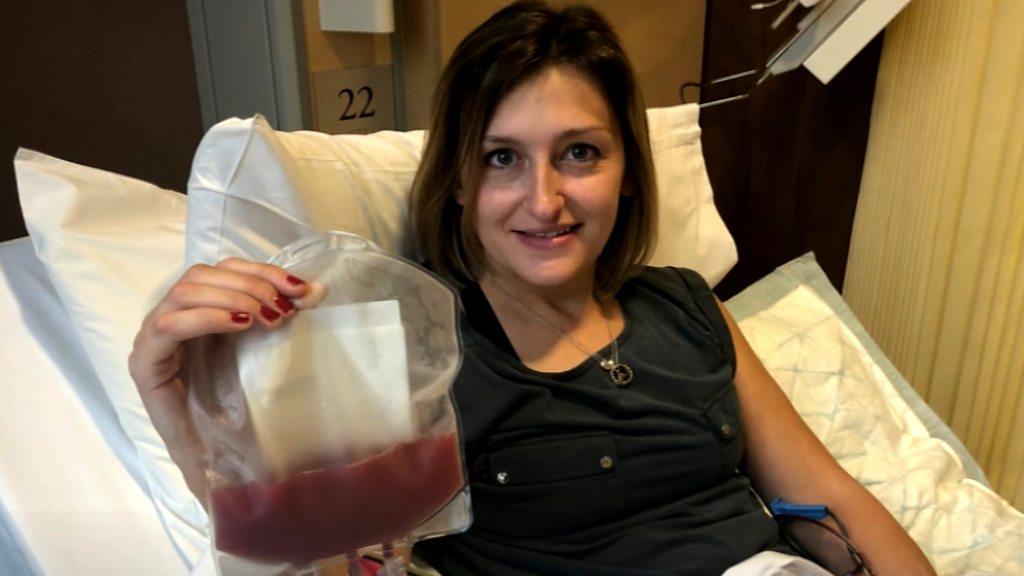‘I’ve got two months to find a donor’
- Published
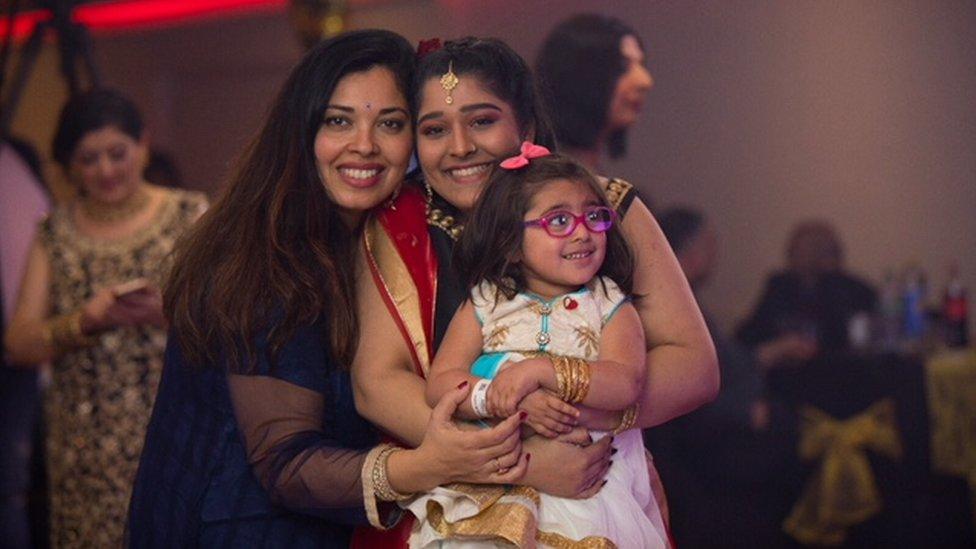
Meena, left, has taken the search for a stem cell donor into her own hands
Looking back at photographs of last year's Christmas party, mum-of-twins Meena Kumari-Sharma says she looked "the picture of health".
She was a successful recruitment consultant and loved long weekends of trips to the zoo and cocktails with friends.
But a few months later, she was diagnosed with leukaemia, and now urgently needs to find a stem cell donor.
Donor matches are never easy to find, and it's even harder if you're Asian.
So rather than sit back and wait, Meena began her own search, external.
"I just wanted to feel that if my children ask in the future, they can say, 'Mummy did everything that she could've done. She really tried everything,'" she says.

Meena had to move away from her children for treatment
When Meena was diagnosed, she was happy in her home in St Albans, Hertfordshire.
But she had to move to Leicester for treatment and leave her two five-year-olds behind with their dad. She video calls them as much as possible.
"Not even a year ago, everything was turned upside down," she says.
"In all honesty, I didn't even know that adults got leukaemia. I'm the first person in my entire family to have got cancer."
Faced with an uncertain future, Meena decided to devote her time to persuading as many people as possible to sign up to the stem cell register.
Supported by blood cancer charity DKMS, she began touring the country, urging people to join up.
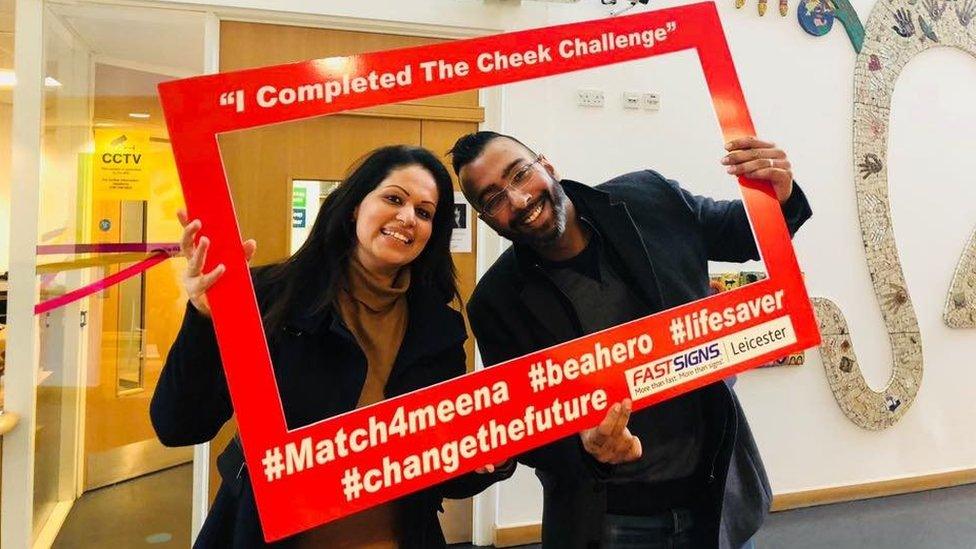
BAME people are more likely to have rarer tissue types
A good match is most likely to be found in people with similar heritages, so Meena is focusing on Indian donors.
With her family in tow, she has set up donor drives in shopping centres, mosques, and temples.
"Last month I had to speak to 1,600 people at a classical concert. People were just crying in the audience," she says.
"I think when they listen to somebody's story that is an actual patient, that is going through the process, that is a mother, that has twins, that is only 41 - that is an actual shock to the system."
In nine weeks, she has signed 1,500 people up to the register as potential donors.
Earlier this week doctors told Meena she had two months left to find a match.
Why is it so hard to find stem cell donors?
To find a suitable donor, doctors have to find someone who matches the patient's tissue type.
In a third of cases a match can be found within the family. In Meena's case, her brother was only a 50% match - so only a last resort.
But two-thirds have to rely on donors on national and international stem cell registers.
And if you're black, Asian and minority ethnic (BAME), that's a bigger problem.
It's not that people from ethnic minorities aren't signing up, says Sarah Rodgers from blood cancer charity Anthony Nolan, as the 1.4 million people signed up as stem cell donors in the UK do broadly reflect the country's ethnic makeup.
But it does mean there are far fewer BAME people on the potential donor list.
And on top of that, anyone who's not from a white northern European background is more likely to have an unusual tissue type.
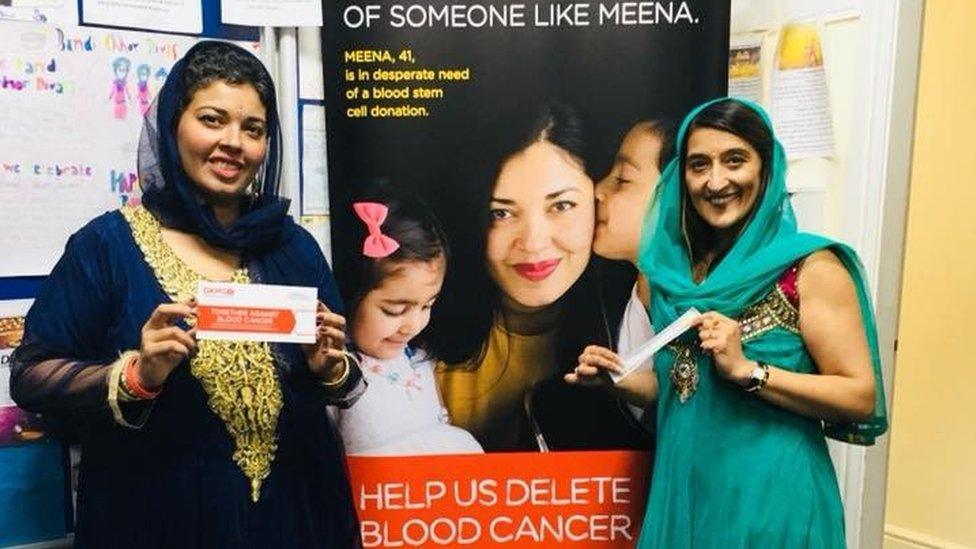
Meena, left, has signed up 1,500 people to the stem cell donor register since starting her campaign
According to Anthony Nolan, 69% of white northern European patients can find the best possible match from a stranger.
But this falls to 20% for patients from BAME backgrounds.
"The problem is that we need a disproportionately higher representation to give those people the same amount of chance as white people," Ms Rodgers says.
And the biggest registers in the world tend to be in predominantly white countries, she says, leaving a smaller pool of BAME people to match from.

How to register as a potential stem cell donor
You can sign up to the register through Anthony Nolan, external and DKMS, external.
Fill in your details. Then you'll be posted a kit to take a quick swab of the inside of your cheeks.
Swab your cheeks, post it back, and you're done.
Stem cell donation is different from blood donation and each have separate registers, so don't assume that if you're on one, you're on the other.
If you're matched with someone, your cells can be transferred through bone marrow transplants or blood transfusions, depending on the patient.
Fran registered as a stem cell donor and was later told she was a match for someone in need - she explains what's involved

Before Meena started her campaign, she would tell people "just pray for me, send positive vibes".
"And now I'm like, well actually, you can organise an event, you can spread the word, you can sign up."
Despite the stacked odds, Meena has found solace in her Match4Meena, external campaign.
"It's been really powerful to just get up, be brave, and speak to people."
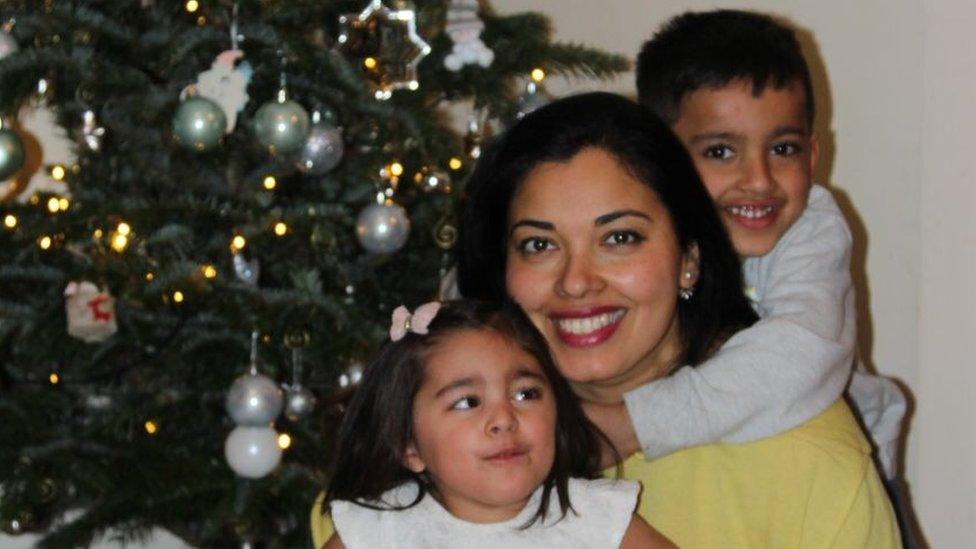
Meena is determined to help save the lives of others
"Before the campaign started, I was really feeling in despair about what the future holds," she says.
"Even still today I don't know what's going to happen in six months' time. I don't know if I'm going to be here or not.
"Obviously that's hugely worrying, but the campaign has allowed me to let go of that negativity and let go of that unknown because this is something tangible that I can do."
Come February, she will have to assess her options.
"When I look back to when I was diagnosed, sitting in front of a consultant, that was horrendous. It was so dramatic.
"I don't know what will happen to me, but I might be able to save someone else's life and that is reward enough."
- Published4 December 2018
